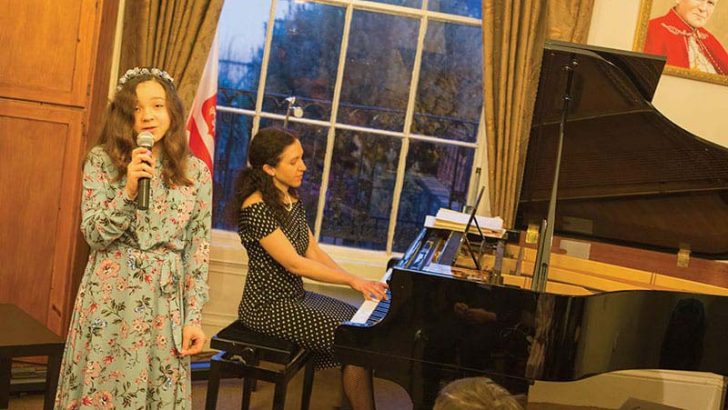The Irish Polish Society Yearbook
ed. Jaroslaw Plachecki , vol. VII 2020 (see contact details below for ordering a copy)
Over the last couple of decades the Polish community has established a strong presence in Ireland – both commercially and socially. The many areas of life and history the two nations have in common are being built on, thanks mainly to the very active Irish Polish community.
A couple of years ago the Royal Irish Academy mounted a fascinating exhibition celebrating Count Paul Strzelecki, a now almost unknown Polish humanitarian whose efforts saved up to 200,000 children during the Great Irish Famine. Such forgotten connections are well worth recovery and exploration.
This year, as usual, the Yearbook of the Irish Polish Society arrived right on cue. It is a periodical from which Irish and Poles can explore their past and present. This year’s issue includes a number of fascinating profiles.
The most important one is on Jan Kaminski, who must be one of the most fortunate and resilient Poles of his generation.
Jan was born into a Jewish family at Bilgoraj, near Lublin in Poland, in 1932. When World War II began it had a population of 8,300, of which 5,000 were Jews. The town was captured by the Germans in September 1939. Persecution of the Jews began immediately.
Deported
During 1941 and 1942, large groups of Bilgoraj’s Jews were deported to extermination camps. The final stage of this appalling action took place in November 1942. Some 400 of the town’s Jewish citizens were shot and the remaining 2,500 were deported to a death camp at Belzec.
Belzec had been established by the Nazis in 1941. It was the first camp built to carry out Operation Reinhard, the policy to use modern technology to conduct the ‘Final Solution’. Almost 500,000 Jews were murdered there, together with some 1,500 Catholic Poles who had tried to save them.
It was closed down in 1943, all signs of it demolished and a pine forest planted on the site. As a result, and because of a lack of survivors and documentation, for a long time little was known about it. Hannah Dowling’s historically-accurate and dispassionate narration at what occurred at Bilgoraj and Belzec is a powerful moral lesson.
Survived
Jan Kaminski survived the awful events at Bilgoraj because he fled from the town during the final pogrom in 1942. However, his parents and siblings were not as fortunate. Jan remained on the run, assisted by people inhabiting the more remote places in the area.
Then he became a victim of another of the Nazi’s heinous programmes. Known as Generalplan Ost, it aimed to ethnic cleanse vast areas and colonise them with Germans. Thus between November 1942 and March 1943, over 100,000 Poles were evicted from some 300 villages and transported to labour camps in Germany.
Those who were not fit for work were moved on to extermination camps. Children were taken from their families and sent to the Third Reich, where some who had Aryan features were selected for ‘Germanisation’ and the rest were sent to work on German farms.
Jan had the good fortune to be rescued at one of the stops on the way by a Polish tailor.
After Lublin was liberated in July 1944 by the Polish army, Jan was adopted by them as a mascot. At the end of the war they took him to London where, with the help of the Polish YMCA, he was able to acquire a secondary education. Next a ‘Veritas scholarship’ enabled him to attend Trinity College in Dublin. After graduating he became a successful restaurateur and later the proprietor of Concorde Travel.
Avocations
The other profiles featured are of persons with very different avocations. Charles Stokes (1852-95) was born in Dublin. Later the family settled in Liverpool, where Charles joined the Church Missionary Society (CMS) in Central Africa. In 1885 he left the CMS and became ‘a gun-runner’! While thus engaged he was captured by the Belgian authorities in the Congo and was hanged after a drumhead court-martial.
Andrzej Wejchert (1937–2009) was a renowned architect. He is best known in Ireland for his buildings on the Belfield campus at University College Dublin (UCB), but he designed many other projects in Ireland and Poland. In the Yearbook his art, style, talent, knowledge and skills are comprehensively explored by a fellow-master of design.
These profiles are just a few of the items in this very interesting and readable Yearbook, which is also replete with information on the Irish Polish Society and its activities.
Please note: the Polish House is only open during evening events. For further information contact: ips.dublin@gmail.com or Polish House, 20 Fitzwilliam Place, Dublin 2. Telephone: 01.676.2515 (+353.1.676.2515), or Krzysztof Kiedrowski on 087.795.1446.


 Celebrating Polish and Irish music and culture in Dublin
Celebrating Polish and Irish music and culture in Dublin 